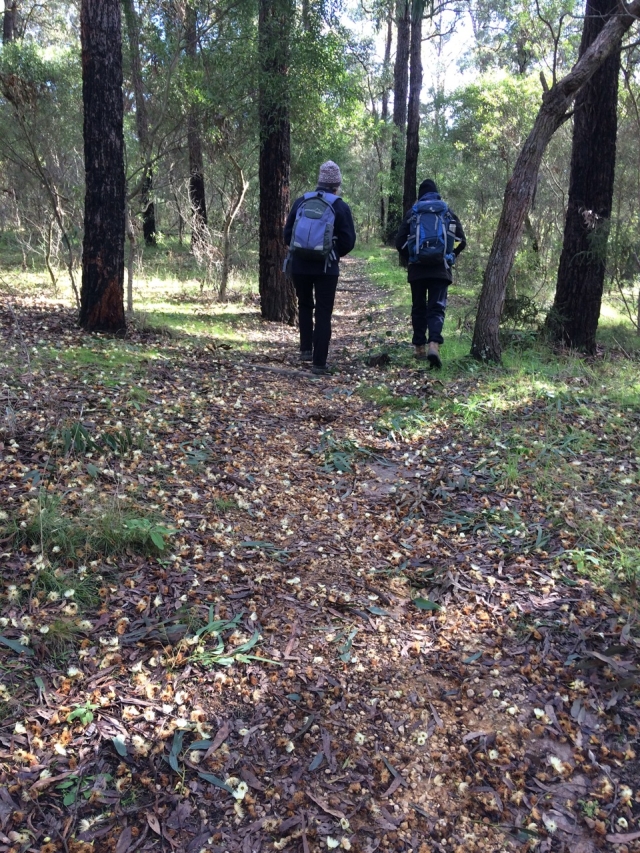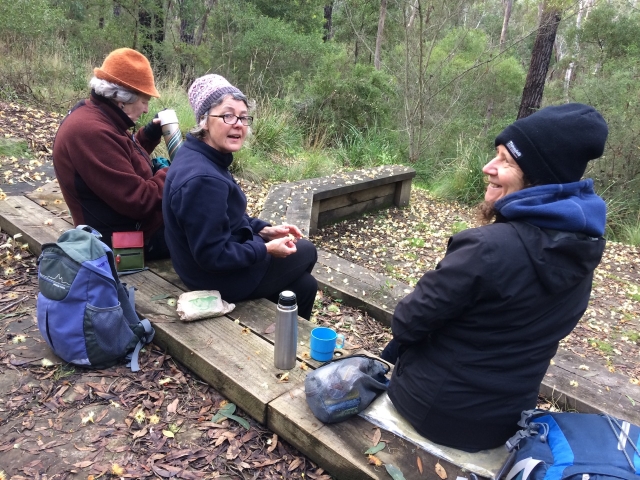Last month, on a crisp, still, sunny winter morning, we went birding locally in Aireys Inlet.
First we drove slowly along Bambra Road and checked out the birds in several locations in the water-logged paddocks. Later in the day, two of us returned to Butlers Bend and saw five more species, including a bird which is unusual for there, the Royal Spoonbill.
At Distillery Creek the ground was carpeted with the creamy, and sometimes pale pink, blossoms of the Ironbarks. We did not see a great number of species but the noise and number of birds were amazing.

The usual dominant species of Red Wattle Bird and New Holland Honeyeater were completely overwhelmed by the Crescent Honeyeaters. They were mostly very hard to see high up in the shaded treetops, except when pairs of Crescent Honeyeaters flashed past us in the undergrowth.

After doing the nature walk there, we sat in the Amphitheatre for a relaxed morning tea and saw another couple of species.

We finished at the edge of the ephemeral wetlands where there used to be a bird hide. The bush birds were much easier to see here on lower tree branches in full sun. This area had been full of water in May, but was now drying out. Years ago it was regularly full of water, but in recent years it is only occasionally flooded, perhaps due to climate change.
Below are all the birds identified:
- Sulphur-crested Cockatoo
- Australian King-Parrot
- Crimson Rosella
- White-throated Treecreeper
- Eastern Spinebill
- Yellow-faced Honeyeater
- Red Wattlebird
- Singing Honeyeater
- Crescent Honeyeater
- New Holland Honeyeater
- White-eared Honeyeater
- White-naped Honeyeater
- Brown Thornbill
- Eastern Yellow Robin
- Silver-eye
- Gray Teal
- White-faced Heron
- Masked Lapwing
- Australian Magpie
- Pied Currawong
- Welcome Swallow
Ellinor Campbell